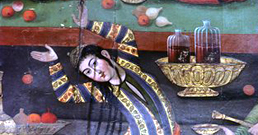Bernard O’Kane, a professor of Islamic art and architecture at the American University of Cairo in Egypt was recently invited to London to meet with other scholars at a gathering hosted by the Iran Society. There he expanded on Iranian art and architecture during the Islamic period.
According to Professor O’Kane the subject of Iranian Islamic architecture is one that is quite vast and pronounced. From the eighth century onward, after the advent of Islam, Iranian art and architecture flourished and experienced many different changes. New building structures like mosques, religious schools and places of prayer for dervishes became part of the fabric of Iranian architecture. In general, the majority of these changes and influences over time impacted and affected decoration and style. In addition to being felt throughout contemporary Iran, these changes and influences also affected the larger sphere of Iranian architecture in places like Iraq, Afghanistan, Pakistan and Central Asia.
One of the most important elements of Iranian Islamic architecture is colour. In this type of architecture the predominance of turquoise blue is very evident. Professor O’Kane believes that the usage of turquoise blue in Iranian architecture can be considered from two perspectives – the technological and the cultural religious. From a technical perspective the abundance of oxidized copper made it possible to create turquoise blue, while from a cultural perspective turquoise blue warded off the evil eye.
Professor O’Kane also believes that symbolism in Iranian Islamic architecture does not necessarily have historical precedence; and in fact, there are no specific reasons for the usage of certain colours. For instance, the colour red was used in jewelry and glass, however because of the expense in producing this colour, its use was rare. The usage of paintings, including images of human faces and animals copied from books, has also become prevalent since the Saffavid period. In addition, Professor O’Kane believes that images of dragons, the phoenix and water lilies, especially during the Ilkhanid period, entered Iranian art and architecture from Chinese art and architecture.
In this multimedia report we join Professor O’Kane’s lecture to see some of the finest examples of Iranian architecture and tile design using various shades of red and blue.


